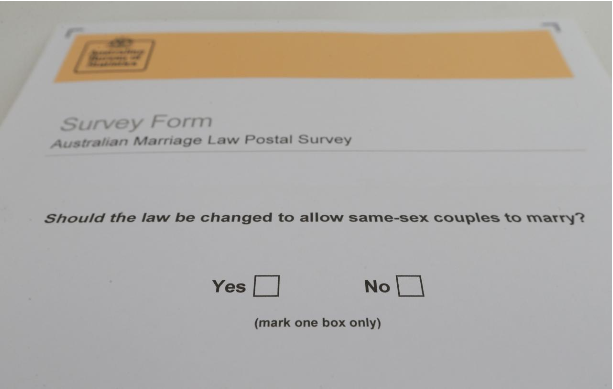By McKayla Skinner
Recently, Australia became the 26th country to legalize same-sex marriage, doing so by means of ballot and parliamentary action. Let us briefly review the context of the change, as well as three lessons that family advocates can learn from it.
Since the turn of the century, Australia’s LGBT community has made 22 attempts to push the agenda of same-sex marriage. When Australia’s Prime Minister, Malcolm Turnbull, ran for office he made the legalization of same-sex marriage one of his campaign promises. Once elected Turnbull fulfilled that promise by resorting to the use of a plebiscite (a non-constitutional poll). Even though the use of a poll was rejected by the Australian Senate in 2016, the high courts allowed it to proceed despite the legal issues.
Between the dates of 12 September 2017 and 7 November 2017, postal ballots were sent out to Australian citizens polling views on the legalization of same-sex marriage. If the polls came back with a majority in favor of legalization some in the government promised to put the bill on a fast track to vote. When the results came back the Australian Bureau of Statistics reported that “61% of the population voted to allow same sex-marriage, with 38% voting against.” This led Prime Minister Turnbull to gloat: “They voted ‘yes’ for fairness, they voted ‘yes’ for commitment, they voted ‘yes’ for love. And now it is up to us here in the Parliament of Australia to get on with it,’ he told reporters in Canberra.”
Once in parliament, the power of persuasion was real. The room seemed to be on a “tipping point” said one senator. The final votes were cast with a voice vote. The majority voted yes, seven abstained, and four voted no. The room divided sides with those who voted no being left out in the open, recognizable, and sincere in their resolution.
Despite this being another loss for family advocates and traditional marriage, there are three lessons to be learned:
First, those who voiced their opposition participated in the democratic process. They exemplify what it means to be resolute when standing for our values, even if at times we are not in the majority.
Second, we should take a lesson from the persistent efforts of those who oppose traditional marriage, and continue in our relentless efforts to protect it. If the opposition’s efforts persisted despite their failures, how much more obligated are we to persist in our efforts to stand for traditional marriage?
Third, we should be outspoken and bold with our clear and concise message of support for traditional marriage. We must campaign for what we know to be right by citing the moral authority upon which traditional marriage exists, facts, and all other means of persuasion.
Only through consistent and persistent adherence to our standards, values, and beliefs can we find success in our efforts to strengthen and defend marriage and families.

